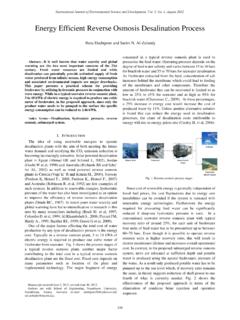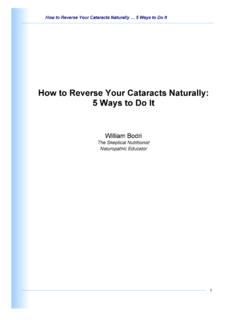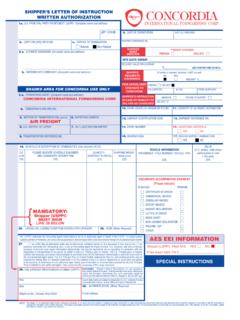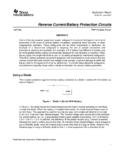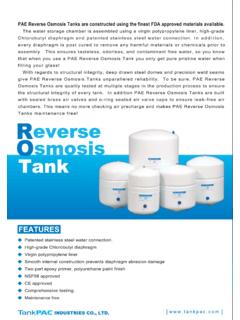Transcription of Boron Removal and Reverse Osmosis
1 Boron Removal and Reverse Osmosis R. Shane Trussell R. Rhodes Trussell Feb 05. OUTLINE. Boron concentrations and guidelines Why is Boron hard to remove? What is the Boron Removal of a typical RO. membrane? Types of membranes Seawater membrane Brackish water membrane What is being done in other projects? Can we cost effectively reduce Boron concentrations? Boron Concentrations Seawater = mg/L. San Diego Wastewater = mg/L. Colorado River Water = mg/L. WHO 1998 guidelines= mg/L. Cal DHS Action Level = 1 mg/L. USEPA Maximum Lifetime Exposure = mg/L. Why is Boron Hard to Remove? Unlike most of the elements in seawater, Boron is not ionized ( it has no charge). Boron takes two forms in drinking water (or seawater): Boric Acid: H3BO3.
2 Borate Ion: H3BO2- RO is much better at removing charged ions. Hence the Removal of borate ion is much better than the Removal of boric acid. The dominant form (borate or boric acid). depends on the pH: H3BO3 = H+ + H3BO2- Boric acid H3BO3 Borate ion H2BO3- Fraction of Boron Typical Seawater is About pH 8. 0 2 4 6 8 10 12 14. pH. Boron Removal by Seawater Reverse Osmosis Dow FILMTEC at pH 8: SW30-380 = 88% (85-90%) mg/L. SW30HR-380 = 90% (88-92%) mg/L. Toray at pH 8: TM820-370 = 92% (91-93%) mg/L. TM820A-370 = 95% (94-96%) mg/L. Hydranautics at pH 8: SWC3 = 89% (NA) mg/L. SWC4 = 92% (NA) mg/L. Boron Removal by Brackish Reverse Osmosis [assuming mg/L 1st pass]. Dow FILMTEC at pH 8: BW30-400 = 65% (55-75%) mg/L.
3 BW30LE-440 = 55% (45-65%) mg/L. Hydranautics at pH 8: CPA3 = 40% (NA) mg/L. ESPA1 = 38% (37%-40%) mg/L. Operating Seawater RO Plants Trinidad - 2 pass system Tampa - 2 pass system Larnaca, Cyprus (14 MGD). Partial 2 pass system (25% flow from 1st pass). SWC3 - claim 1 mg/L Boron after 2 years of operation Can We Economically Meet a Low Boron Concentration YES! By doing one or more of the following: Choose good SWRO Membranes Partial 2nd Pass Possible pH adjustment in the 2nd Pass Effect of 2nd Pass with and without pH adjustment Meeting a Low Boron Concentration The additional water cost for 2nd pass is estimated to be: $20 - 30/acre-ft

